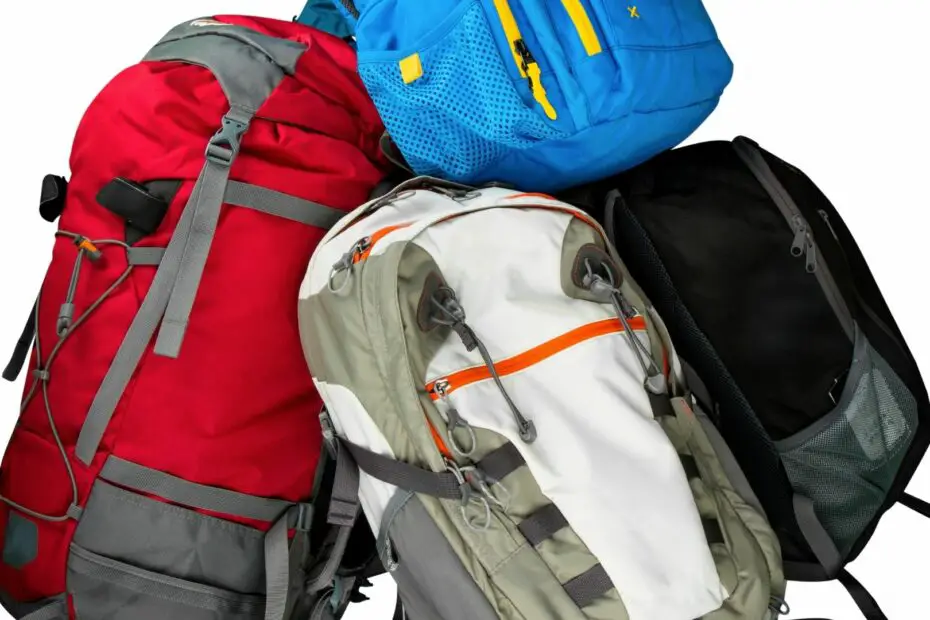A backpack seems like a simple accessory. It’s just a simple fabric bag, with straps, and a few zippers. You may be surprised that there’s more that goes into making a backpack than you may think. Your backpack needs to be strong enough to hold all year gear and that’s determined by the materials uses in the design. What is a backpack made of and what are the best backpack materials?
Most backpacks are made out of nylon, polyester, polypropylene or canvas. There are also a wide range of other materials used in backpacks.
Table Of Contents
What Are Backpacks Made Of?
Backpacks are typically made out of a few common materials: nylon, polyester, polypropylene, or canvas. These materials are extremely durable and can withstand the wear and tear of heavy usage. With that being said, there’s a long list of materials that you can be used in a backpack.
- Nylon
- Polyester
- Polypropylene
- Canvas
- Leather
- Denim
- Cotton
- PVC
- Specialty Fabrics (Have Nylon Base): Ripstop, Cordura, Kodra, Ballistic Nylon
I’ll explain each of these materials and go over the advantages and disadvantages of each backpack material below. Once you’ve picked a material skip down to the bottom where I go over other aspects that affect the durability of a backpack.
There Are 4 Main Backpack Materials
When looking at backpacks, one of the first questions you need to ask is: what is the backpack made of? Backpack material is a major factor when trying to determine the strength and durability of the bag. There are more factors you need to consider (pack size, pockets, other features), but narrowing down your backpack material should be the first choice.
There are four main materials that are used in modern backpacks: Nylon, Polyester, Polypropylene, and Canvas. You also have specialty blends of each material and other less common backpack materials (leather, denim, PVC, etc.).
1) Nylon Backpacks
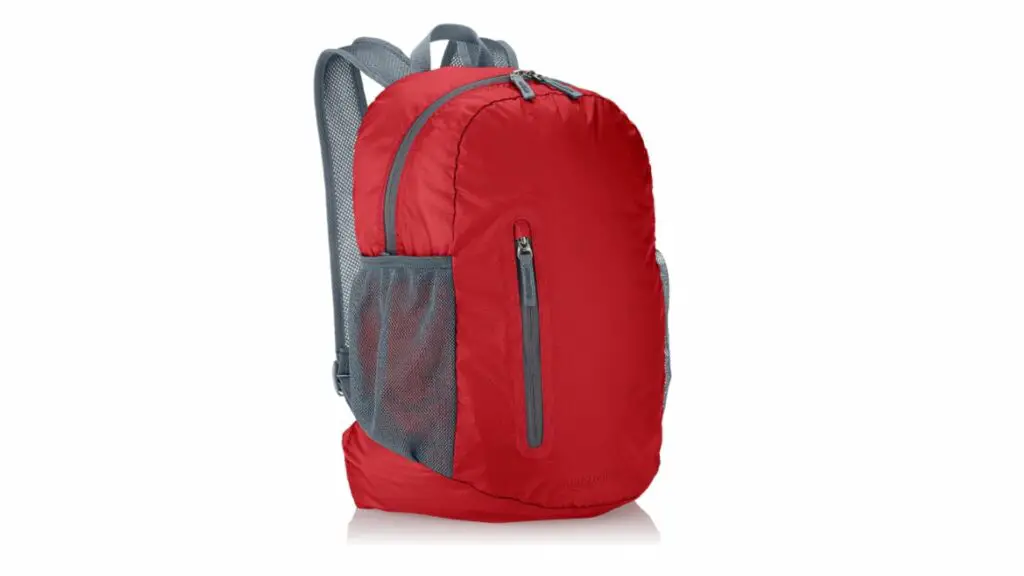
Advantages:
- Extremely Durable
- Waterproof
- Lightweight
- Tear Resistant
Disadvantages:
- Expensive
- Less Fashionable
- Stains Easily
Nylon is by far the most popular backpack material on the market. Almost ever hiking backpack and most school/business backpacks use some type of nylon blend. A nylon pack is actually made out of a broad range of plastics that are melted down into Nylon Fibers. Those fibers are then woven into into durable threads that are used to make backpacks.
Nylon is one of the easiest threads to melt down and weave, making nylon packs cheaper than most of the other materials on this list. Don’t get me wrong, being cheap doesn’t mean nylon isn’t an excellent backpack material. It’s surprisingly strong, durable, abrasion resistant, water-resistant, and can handle extreme temperatures.
There is one small weakness to Nylon packs. They’re less UV resistant than other synthetic materials, which isn’t a huge deal. The pack will still hold up under direct sunlight, but it will eventually fade over time.
Branded Specialty Fabrics Use Nylon Blends
Most of the branded specialty fabrics like Ripstop, Cordura, Kodra, and Ballistic Fabrics use a nylon base paired with other synthetic fibers. You get all the advantages of using nylon with the added durability of other materials. I’ll explain each of these branded fabrics in more detail below.
2) Polyester Backpacks
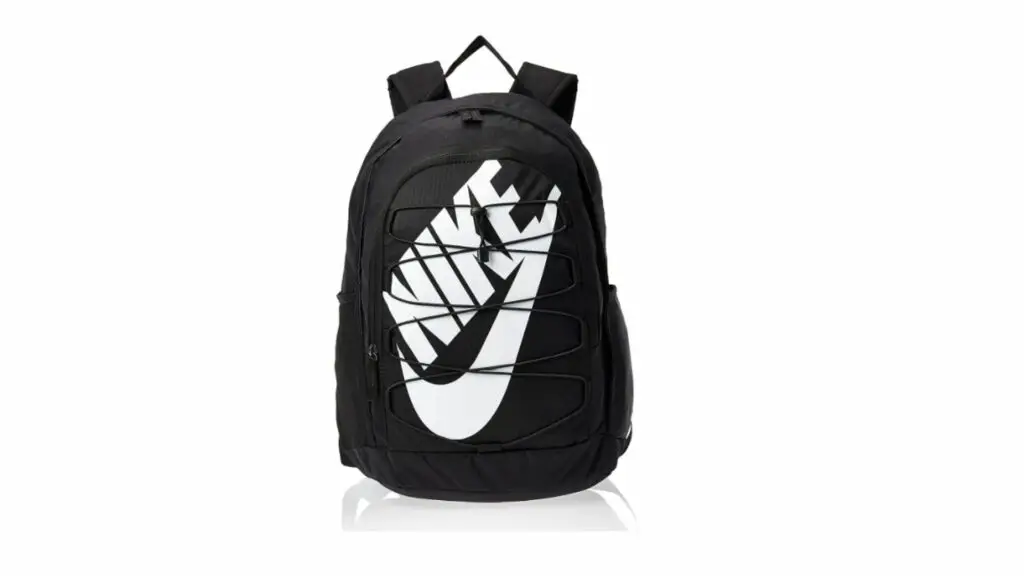
Advantages:
- Affordable
- Flexible
- Fast Drying
Disadvantages:
- Temperature Sensitive
- Dye May Bleed Out
- Heavier Than Nylon
Polyester is another plastic-based fabric that’s very similar to nylon. They first became popular in the 70s and it’s still one of the most popular materials used in backpacks today. Most manufacturers use polyester interchangeably with nylon depending on the brand.
Polyester is a super durable and wear resistant material that can handle most situations. It’s a great pack for outdoor enthusiast since it’s water-resistant, dries fast, and it can hold up to most chemical treatments. A polyester pack paired with a durable water resistant spray will be able to resist light rain, but you may need to use a pack liner or raincover for moderate/heavy rain.
3) Polypropylene Backpacks
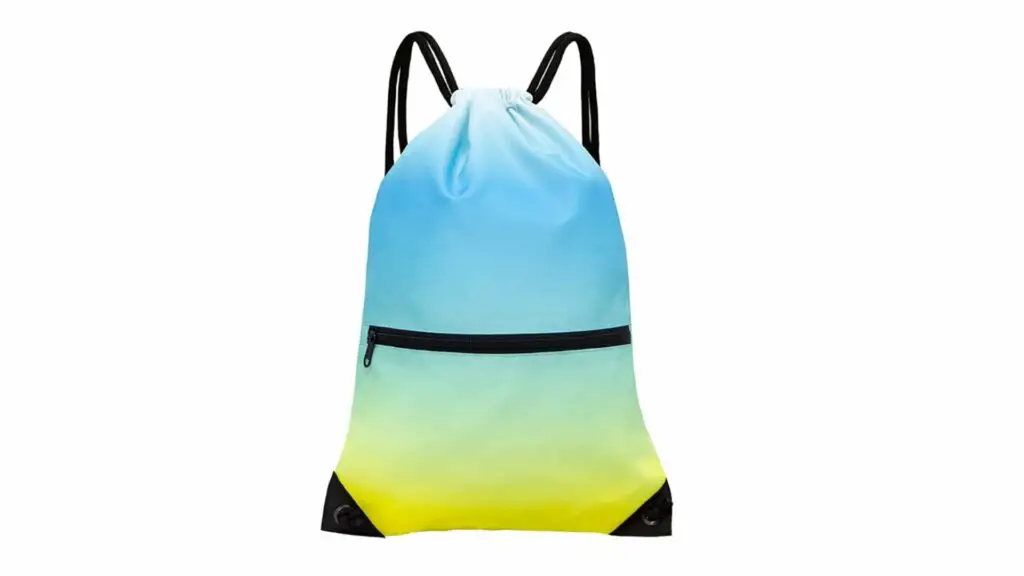
Advantages:
- Easy To Clean
- Lightweight
- Long Lasting
Disadvantages:
- Cheap Barebones Designs
- Sun Damage
- Flammable
- Discoloration
Polypropylene isn’t as common of a material as the other synthetics on this list, but it’s commonly used as a secondary blend in backpacks. It’s actually a really great product since it’s water/chemical resistant, strong, tearproof and takes a lot to wear this plastic down.
Despite all of these benefits, you will only find polypropylene in very specific applications and as a secondary blending material. It’s usually used in the cheap drawstring backpacks and affordable lightweight packs. A polypropylene backpack isn’t bad, but there’s no clear advantage over nylon or polyester.
4) Canvas Backpacks
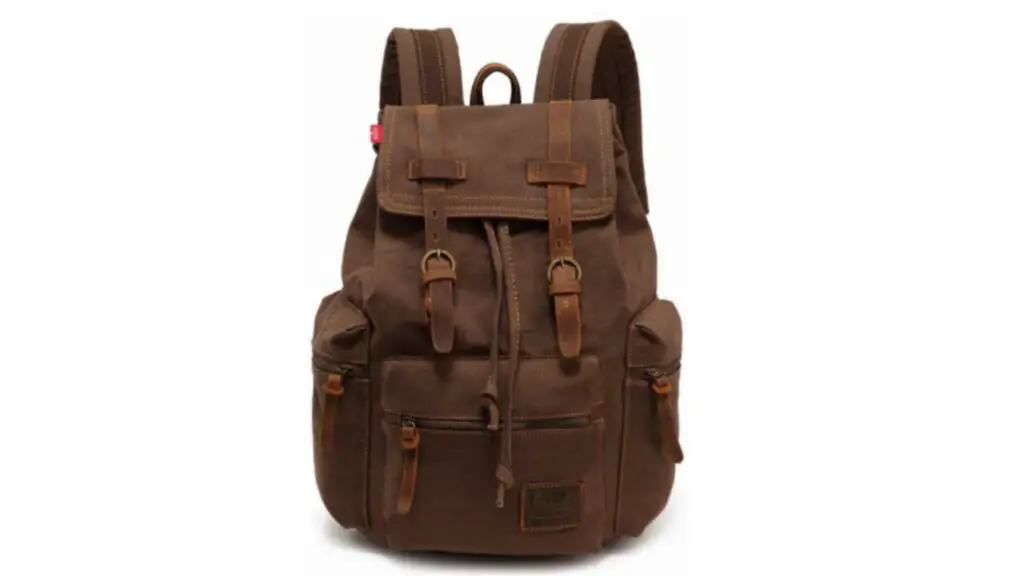
Advantages:
- Sturdy
- Fashionable
- Retains It’s Look/Feel Over Decades
Disadvantages:
- Expensive
- Less Breathable
- Heavy
- Only Available In Neutral Colors
Canvas is an old school material that was used in military backpacks and the hiking backpacks of our grandparents generation. It’s made a comeback over the years with most high end backpack manufacturers offering canvas alternatives.
A canvas pack will be heavier than most of the other packs on this list so they’re not great for hiking, camping etc. With that being said, it’s a highly durable material that will retain it’s look and feel for life. My dad still uses a top load canvas duffel bag from the Vietnam War era
Branded Backpack Materials
Many manufactures giver their materials a fancy name or designation to make them stand out from the crowd. Calling a product super strong nylon isn’t as marketable as Ripstop, Cordura, Kodra or Ballistic Nylon.
Don’t get me wrong, there’s definitely a difference between these branded fabrics and traditional nylon, but manufacturers almost always use nylon fibers as their base. The difference lies in how they weave the fabric and the additives used to improve strength, durability, and cut/abrasion resistance.
Two different fabrics that are made out of nylon can have completely different durability profiles. These materials are far more durable than traditional nylon backpacks, but that comes with a slight increase in weight.
1) Ripstop Fabric (Nylon, Polyester, and Polypropylene)
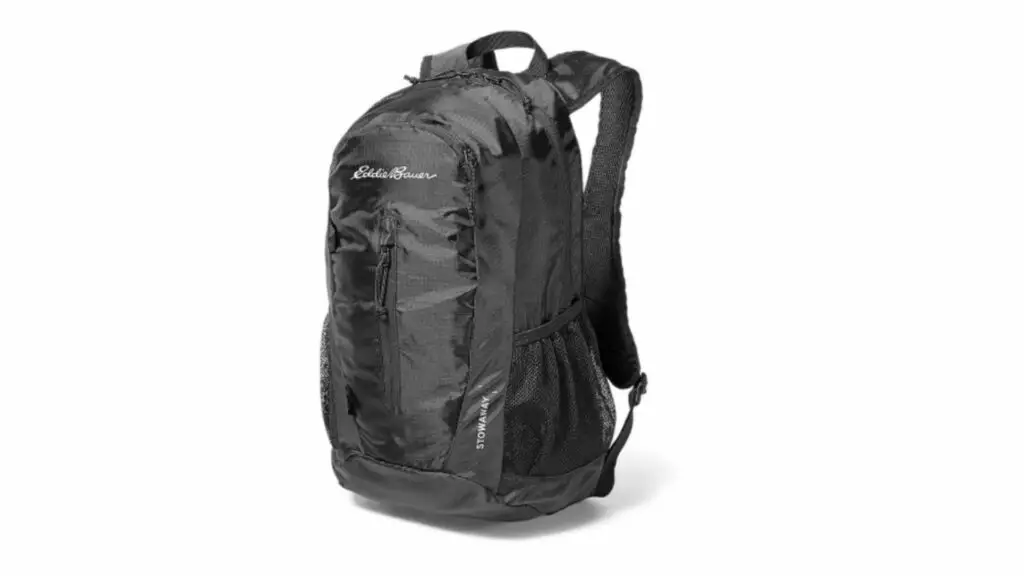
Eddie Bauer Stowaway Packable 20L Backpack
Advantages:
- Extremely Durable
- Waterproof
- Lightweight
- Tear Resistant
Disadvantages:
- Expensive
- Less Fashionable
- Stains Easily
Ripstop fabric sounds impressive, but does it live up to its name? It’s certainly stronger than most of other materials on this list, but it’s a simple blend of nylon, polypropylene, and polyester. They take the durability of each of those fibers and weaves them together into a thicker interwoven thread.
The fabric weaves together into a thicker stronger weave pattern that’s specifically spaced into the strongest possible fabric. This helps make the fabric stronger and far more durable than they would be on their own.
Ripstop is designed for boat sails, hot air balloons, and high heavy use camping gear, but it’s also found in heavy duty backpacks. I think ripstop fabric is overkill on most backpacks since Nylon/Polyester is durable enough for 99% of situations.
Do you really need to spend the extra money on ripstop fabric for slightly improved durability? Probably not! But it’s nice to have when you’re going through technical terrain.
2) Cordura Fabric (Higher Quality Nylon and Sometimes Polyester)
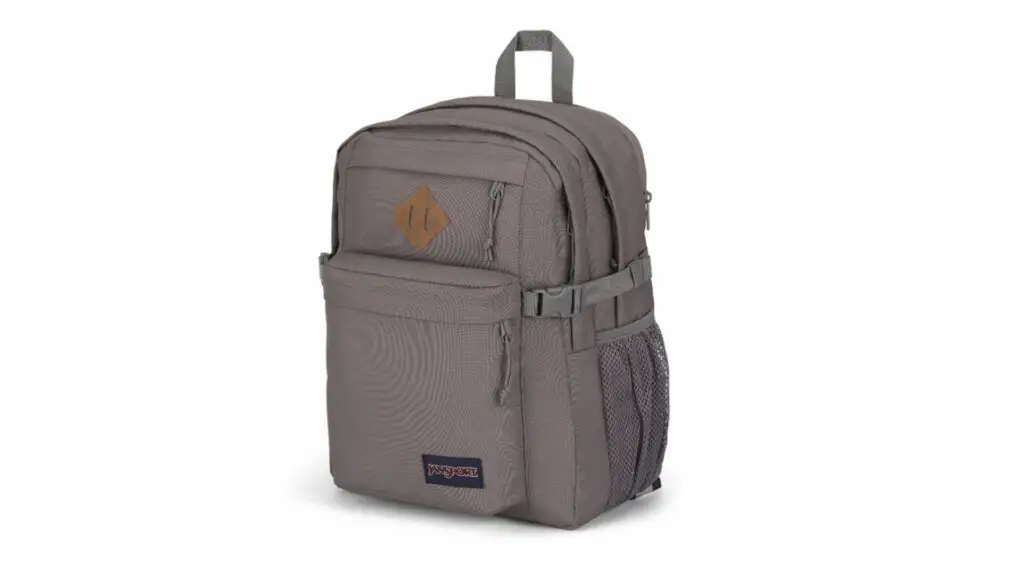
Advantages:
- Almost Indestructible
- Rugged Look
- Waterproof
Disadvantages:
- Heavier Weight
- Expensive
- Hard To Find
Cordura was originally created by DuPont as a premium military textile. In the early days, cordura was a rayon style fabric that was primarily used for World War II truck tires. Scientists were trying to strengthen the materials in thier tires by manufacturing stronger rayon yarn.
After discovering alternative uses for the product, they transitioned into making durable fabrics that could be used in luggage, backpacks, pants, trousers, military fatigues, and performance apparel.
Most people refer to Cordura as a type of fabric, but it’s actually a catch all term for the manufacturing process. In the 1970s, Jansport adapted this process into the modern cordura we’re familiar with today. Modern cordura is typically made out of heavy duty nylon thread, but it can also have cotton or other natural fiber additives.
Now Cordura is a brand of its own and it’s available in a wide range of fabric constructions, weights, and aesthetics. Some of them are designed primarily for tear/puncture resistance, some reduce weight, help with water-resistance, increase insulation, and others are better at holding colors and to reduce fading.
There are a wide range of cordura fabrics available, but you can usually figure out what the manufacturers going for based on the product name. Cordura backpacks are typically made out of Cordura Ballistic (abrasion/puncture proof durability), Cordura Classic (Standard Heavy Duty Nylon), or Cordura Lite/Ultralight fabric (lightweight and durable), but there are some exceptions.
Here’s a short list of the different Cordura brand names and what they’re known for. Most of these won’t be used in backpacks, but it will show you how broad the Cordura Fabric category is.
- Cordura 4EVER KNIT: lightweight and soft fabric
- Cordura AFT: Breathable Mesh
- Cordura Ballistic: Heavy Duty Durable Performance Fabric
- Cordura Classic: Original Durable Nylon Cordura
- Cordura Combat Wool: Nylon wool substitute
- Cordura Denim: Denim look made out of nylon
- Cordura HP Fabric: Polyester blend Cordura
- Cordura Lite Fabric: Strong and Lightweight Nylon Fabric
- Cordura Lite Plus: Premium version of Cordura Lite
- Cordura Naturalle: Soft natural feeling nylon
- Cordura Nyco: Nylon that feels like cotton
- Cordura Nyco Knit: Cotton feel with added durability/water-resistance
- Cordura RE/COR: Durable Recycled Polyster
- Cordura T485 Hi-VIS: High Visibility Construction Fabric
- Cordura Truelock: Eco-friendly color stay fabric
- Cordura Ultralite: Lightest version of cordura
3) Kodra Nylon (Abrasion Resistant Nylon)
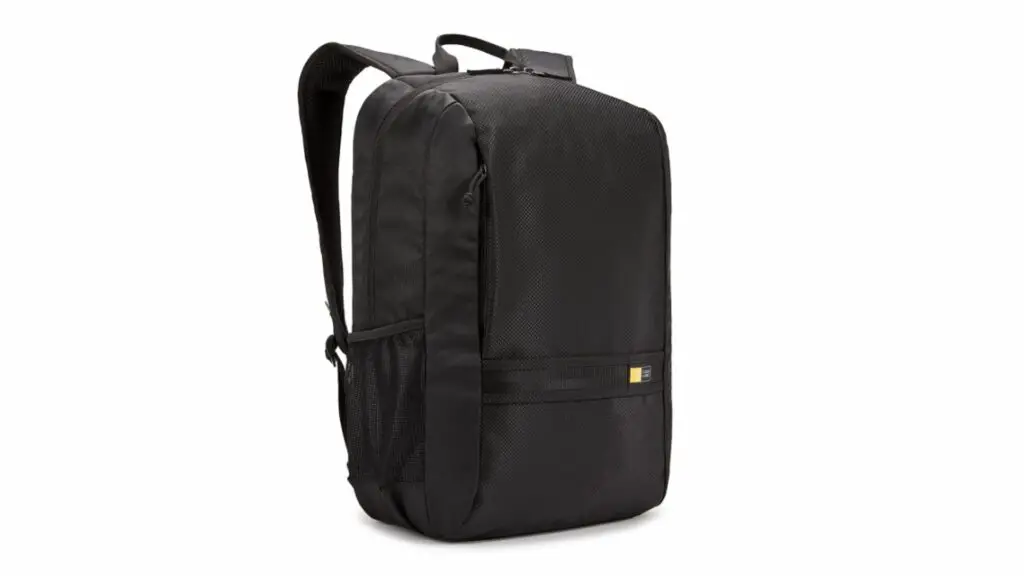
Advantages:
- Almost Indestructible
- Rugged Look
- Waterproof
Disadvantages:
- Heavier Weight
- Expensive
- Hard To Find
Kodra Nylon is was developed in the 1950s as an alternative to Cordura. It originated in South Korea and it’s commonly used as a Cordura substitute on imported backpacks. You will find Kodra Nylon on a wide range of backpacks, outdoor gear, and military apparel.
There isn’t much of a difference between Kodra and Corduras Classic blend. Some companies refer to Kodra as the “Gold Standard” for nylon fabric, but I haven’t noticed much of a difference between Kodra and Classic Cordura.
While it has a slightly different manufacturing process, the materials used and weave is basically the same. Kodra performs just like Cordura: lightweight, puncture-resistant, and more durable than regular nylon blends.
Whether or not a manufacturer uses Kodra or Cordura depends on where the backpack is being produced. Most Asian countries use Kodra and European/American based companies typically use Cordura.
4) Ballistic Nylon (Military Grade Nylon To Protect Against Shrapnel)
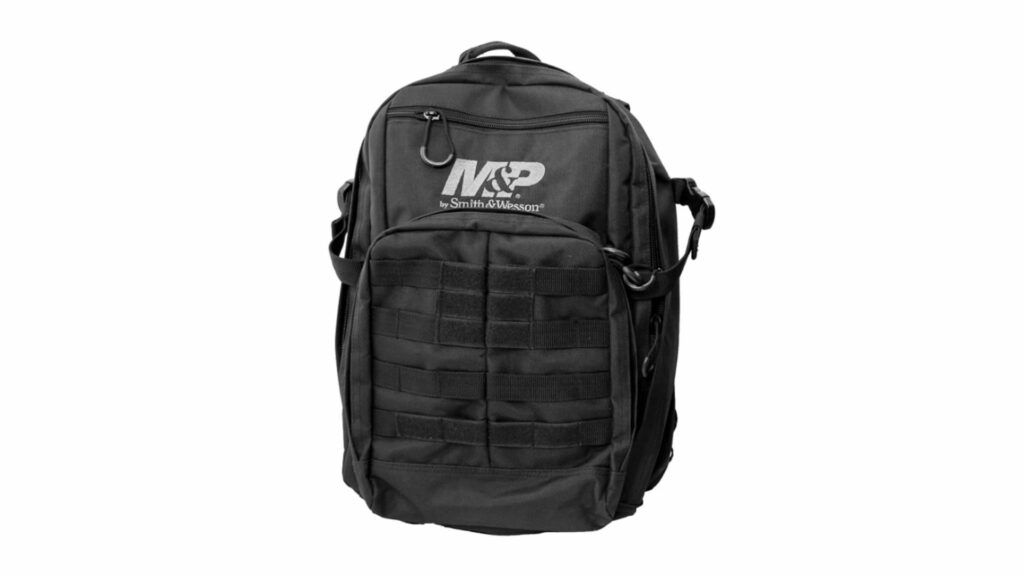
Advantages:
- Puncture Proof
- Extremely Durable
- High Capacity
Disadvantages:
- Expensive
- Limited Color Options
What pops into your mind when you hear the term “Ballistic Nylon”? If your first thought was some kind of military grade fabric, you would be right! The term Ballistic Nylon originated from the fabrics original purpose flak jackets (I’ll Explain More Below).
Ballistic Nylon was originally designed for blast protection, but it was quickly replaced by other bulletproof materials like kevlar. Although it was ineffective at stopping bullets, it’s durability and resistance to cuts and punctures make ballistic nylon useful for non-combat applications.
Today, it can be found in in a wide variety of products including: backpacks, luggage, belts and straps, motorcycle jackets, watch bands, knife sheaths, and various protective straps. Anything that needs to be extremely durable and puncture proof is a great application for ballistic nylon.
It’s almost impossible to destroy a ballistic nylon backpack. You can slice it with a knife and it won’t penetrate the ballistic weave. It’s a little bit heavier than a typical nylon backpack, but the durability makes up for that in heavy duty applications.
The only problem with ballistic nylon is that it’s almost impossible to dye. So most ballistic nylon backpacks will either be black or a very dark shade of brown or gray.
History Of Ballistic Nylon
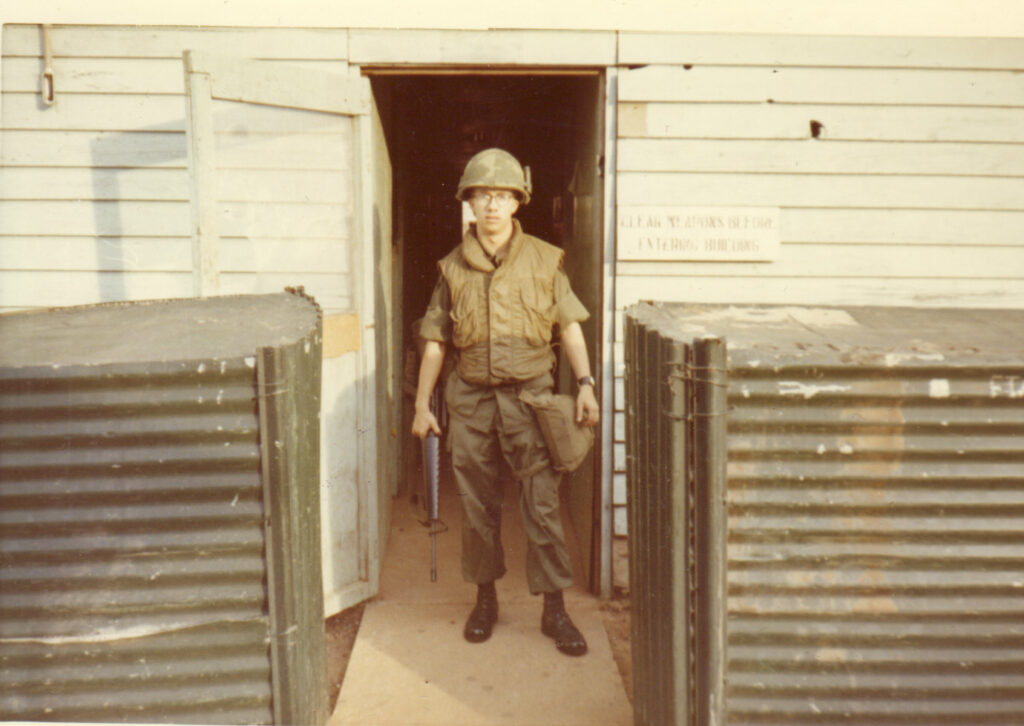
This section doesn’t relate specifically to backpacks so I seriously considered removing it. At the end of the day, I decided that it was too interesting to ignore. Feel free to skip down to the next section where I go over a few of the less common backpack materials.
Ballistic Nylon was developed by the DuPont Corporation as a material that would be used in Flak Jackets during World War II. It was an 18 oz Nylon fabric with a “ballistic weave”, made form 1050 Denier high tenacity nylon yarn in a 2×2 basket weave.
That’s just an overly complicated way of saying that it was designed to protect pilots from flying debris and fragmentation caused by bullets and artillery shell impacts. They used multiple layers of ballistic nylon paired with a Manganese Steel Plate.
The plate protects against rifle/pistol fire and the Nylon Flak jacket provides protection against case fragments from high explosive weaponry, grenades, shotguns, land mines and low-velocity projectiles.
Ballistic Nylon may have stood up against the low caliber machine guns used in World War 1 firepower, but it couldn’t stand up against the high caliber pistols, rifles, and heavy machine guns used in World War II. It could stand up to small blasts and shrapnel injuries, but it was quickly replaced by Kevlar and other bullet-resistant fabrics.
Less common Backpack Materials
There are a small handful of materials that aren’t commonly used in backpacks. Most of these materials are used in specialized applications, where are a person is going for a specific style.
1) Leather
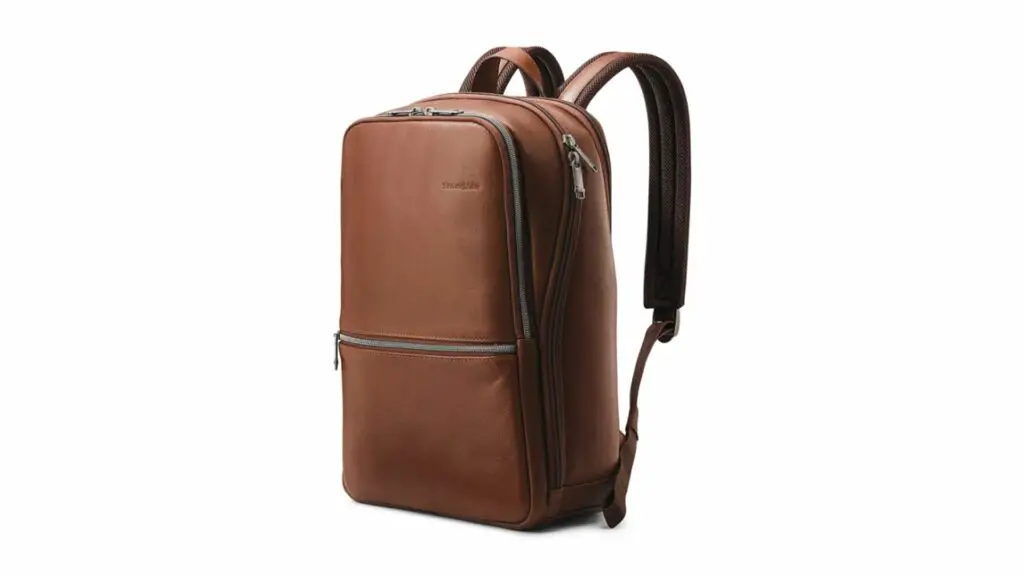
Advantages:
- High-End Professional Look
- Very Strong
- Lasts For Decades
Disadvantages:
- Cumbersome To carry
- Extra Weight
- Requires Special Wash Instructions
- Made From Animals (Vegan Options Available)
A leather backpack is a great choice for a professional setting. It’s one of the strongest fabrics on this list and a quality leather pack should last for years. My bad bought me a small leather backpack to use as a carryon when I was a kid and I’ve been using it for 20+ years.
Leather packs are more cumbersome to carry, but that’s what you get with added durability. You will have to follow special washing instructions with a leather pack, but it’s easy to do. Vacuum out the insides of your pack and wipe it down with a specialist leather cleaner or soapy water.
2) Denim
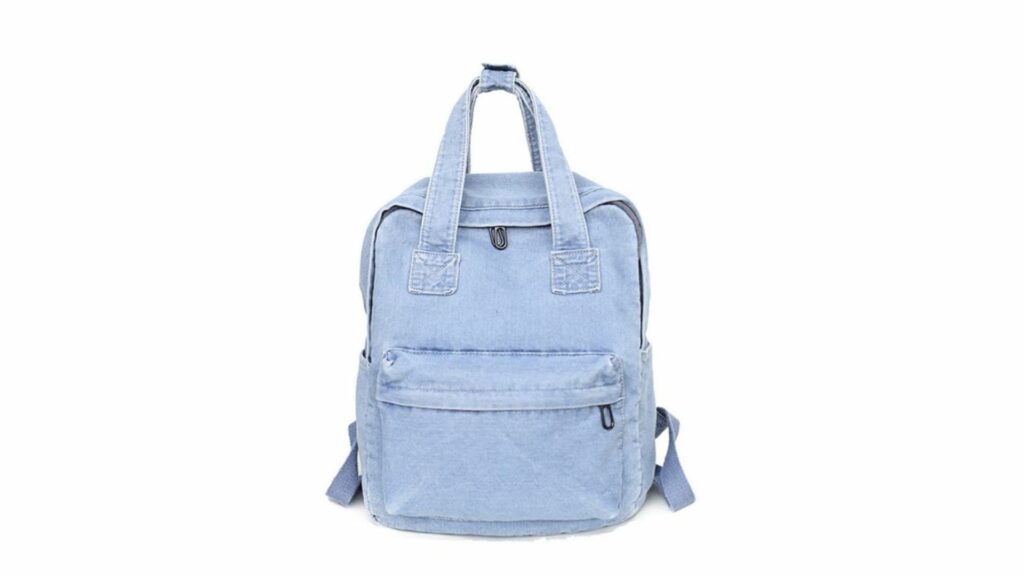
Advantages:
- Stylish
- Machine Washable
- Affordable
Disadvantages:
- Low Weight Capacity
- Dye May Bleed In Washing Machine
Denim backpacks are generally seen as an affordable niche fashion choice. Most people view denim as a durable material, but that’s not the case when it comes to backpacks. It’s great when it comes to abrasion resistance, but you can’t hold as much weight with a denim pack.
The only major advantage to using a denim pack is that you can toss it in the wash when it gets dirty. Just be careful because denim packs are rarely prewashed, so the dye may bleed on whatever else is in the washing machine.
3) PVC
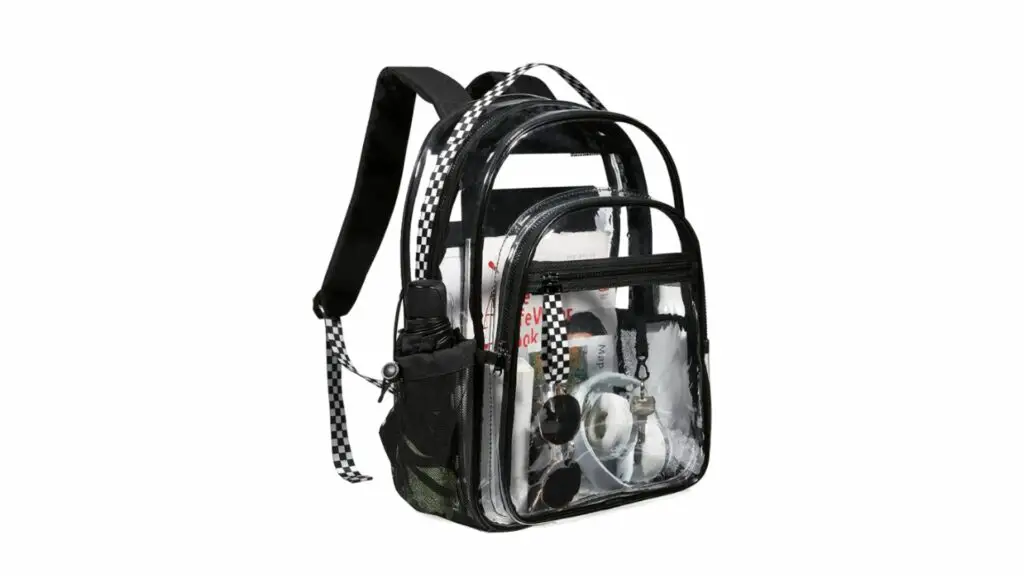
Advantages:
- Affordable
- Waterproof
- Lots Of Color Options
Disadvantages:
- Looks Cheap
- Poor Durability
- Easy To Get Dirty
A PVC backpack wouldn’t be my first choice, but they do have one major benefit. Most PVC backpacks are completely waterproof and available in a wide variety of color options. So you may want to look into waterproof PVC pack for kayaking, canoeing, fishing, etc.
There are definitely a few downsides to using a PVC pack. They’re less durable than other materials and don’t take long to get dirty. A clear PVC pack also looks cheap compared to other backpack materials.
4) Cotton Backpack
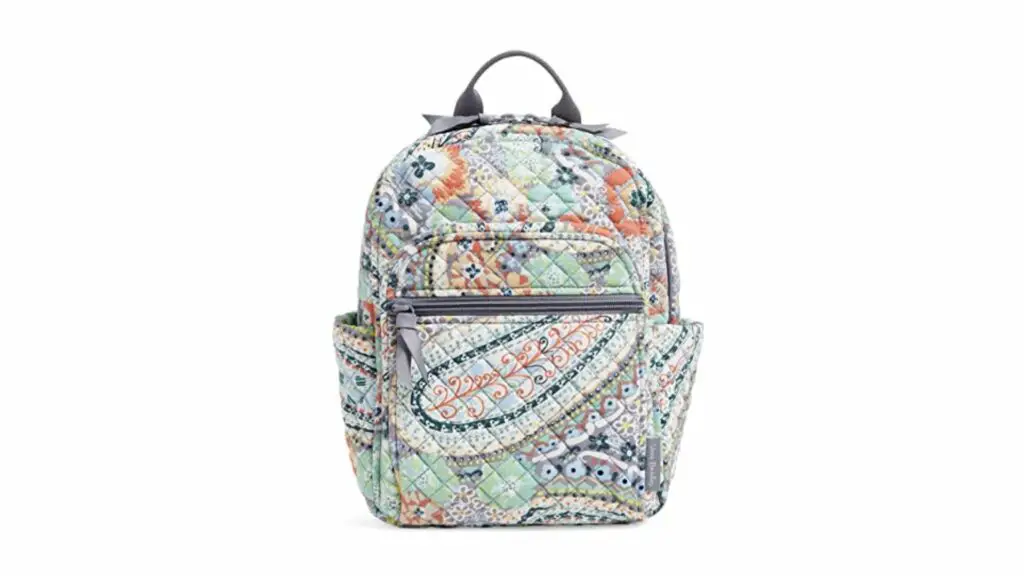
Advantages:
- Affordable
- Stylish Prints
- Lightweight
Disadvantages:
- Absorbs Water
- Poor Durability
- Low Weight Capacity
Cotton on its own isn’t the best backpack material, but most cotton based backpacks are mixed with canvas. This blend is much stronger than using cotton on its own and better at dealing with exterior moisture. Cotton is one of the worst materials when it comes to absorbing water, but canvas is naturally water resistant.
A cotton backpack wouldn’t be my first choice, but they’re still a decent investment. They’re a little bit more expensive, but it’s a stylish alternative to other materials on this list. Cotton backpacks should last for multiple years if you don’t overload the pack.
Other Factors That Affect Backpack Material Strength and Durability
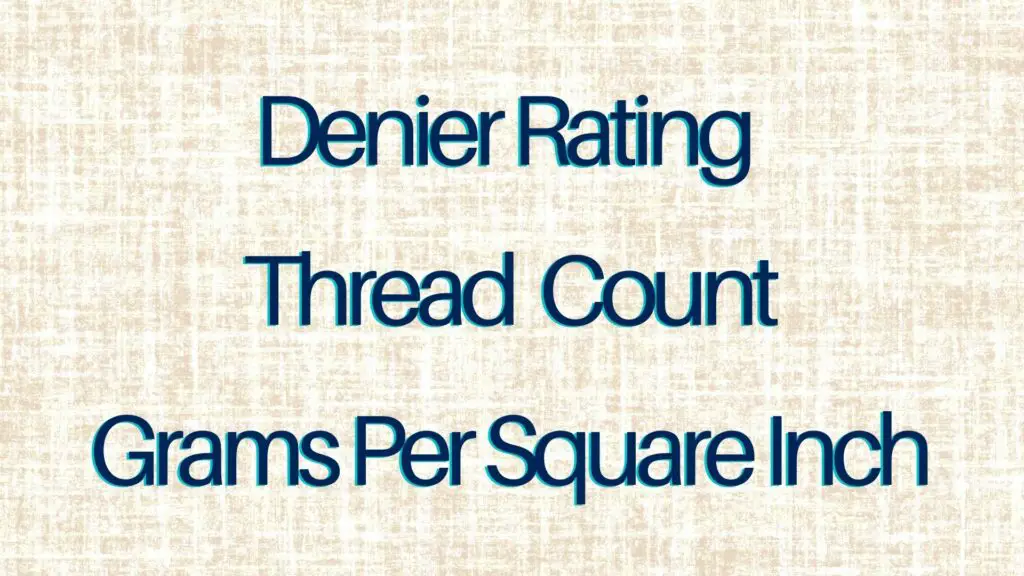
Now that you’re well versed in all the different materials that are used in backpacks, let’s go over a few other factors that affect the strength/durability of your pack. Just because two different backpacks are made out of the same material doesn’t mean they’re using the same quality fabric.
In most cases, you will see a bunch of numbers and letters that designate the quality of the fabric used in your backpack. These letters refer to the Denier Rating (D), Thread Count (T), and Grams Per Square meter (GSM).
The Denier rating is the most important part so that’s usually what’s listed, but you can sometimes find the other ratings listed some where in the product specifications. You may also run into the term Tenacity(Strength to Linear Density Ration), but that’s only found on high end backpacks for specialized applications.
- Denier Rating (D): The Denier rating is by far the most important way to tell the strength/quality difference between two similar material backpacks. A higher denier rating means they’re using a heavier/stronger fiber. You can’t compare denier ratings across different materials since they have different strength profiles.
- Thread Count (T): This is rarely seen in the high-end backpack world, but it refers to the thread count used in the backpack. It’s the count of how many threads there are in a square inch. Thread count is sometimes used as an alternative to denier rating since it tells you the thread strength (higher is better). The denier rating is the industry standard, but I have run into the thread count on imported backpacks.
- Grams Per Square Meter (GSM): I’ve only seen GSM listed on polypropylene backpacks since they don’t use a typical threaded weave. This measures the density of the material, with higher GSM ratings being more durable.
- Tenacity: Refers to the strength to linear density ratio (basically the breaking strength). You can pretty much ignore tenacity, since it’s rarely listed outside of specialized industries where it could mean the difference between life and death (military, search and rescue, etc.).
Just note that these aren’t the only factors that affect the strength and durability of a backpack. You also have staple length, fiber fineness, fiber strength, weave pattern, twist, evenness, fiber length, chemical treatments, and god only knows how many other factors that can affect quality.
Unfortunately, most of these factors can’t be determined on the consumer end. So read product reviews and trust your gut! Go with whatever product looks/feels nicer than the other one, because denier ratings can be deceptive.
